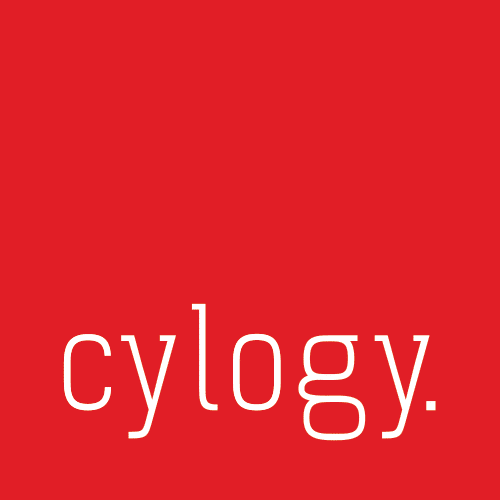Recently, there has been an increased focus on using a headless CMS to deliver compelling customer experiences; it’s certainly being pushed by DXP and CMS vendors. But is it resonating with the marketing teams who ultimately decide which platforms to use? In our conversations with marketers, we’re finding there is still some confusion about what the benefits of going headless actually are.
In this post, we’re going to help digital marketing teams consider whether a headless CMS is right for them by exploring the advantages of the platform.
What is a headless CMS?
A headless CMS is a platform that decouples the content it stores in the backend CMS from your front-end experiences, which are built using a different system or systems. The headless CMS and front-end experiences then communicate through APIs. This is very different from a more traditional DXP or CMS where the backend and frontend are tightly integrated within one system. A headless CMS will often work across more than one front-end experience, delivering the same content to a corporate website and a mobile app, for example.
Is there really a growing use of headless?
There is some evidence that organizations are using headless more and more. The industry is certainly sensing a market opportunity, with the sector forecast to grow to $US 1,628 million by 2027, representing a CAGR of 22.6% between 2020 and 2027.
Headless CMS vendors like Contentful have received high levels of investment, while established DXP vendors like Sitecore have also pushed the headless capabilities of their platform, sometimes as a component of a wider “composable DXP”.
What are the advantages of going headless?
There are a number of potential advantages to going headless which we explore below.
1. Supporting omni-channel publishing
Today, customer experience is omni-channel: customers are interacting with brands via corporate websites, mobile apps, social media and e-commerce platforms. Other channels, such as voice, are also growing in importance. Keeping up to date in a fast-moving, omni-channel environment has its challenges, and a headless CMS can help navigate some of these.
One of the main advantages of headless publishing is that you can serve up the same content across multiple front-end experiences, such as your website, mobile app and online store. You may have different country-level websites that are translated from the original base content which, again, could be stored in a headless CMS.
Using a headless CMS means you do not have to manage various versions of the same content across multiple platforms and ensure they are in sync – you have a single source of truth for your content which you can keep up-to-date, with changes mirrored across all your external-facing channels. This saves on time and cost – always good news for tightly resourced digital teams – but also helps ensure your content is in keeping with the latest brand messaging and information.
2. Greater flexibility
One of the main advantages of headless is that it gives digital marketing teams greater flexibility to launch new digital experiences. When you have a more traditional, integrated DXP, there are far more dependencies involved between how you store and present your content. Creating a new experience will involve considerations including how you store your content in the backend, the impact on current experiences, carrying out extensive testing and potentially having to compromise on what you deliver.
A headless CMS will offer far greater flexibility because you can create new experiences from scratch in whatever front-end system you like without disturbing your existing front-end experiences, avoiding many of the dependencies which require extensive planning or can place constraints on your digital project.
Additionally, it is very common for the front-end platform selection to be best-of-breed options with widespread adoption. This means your front-end developers can work effectively without needing detailed knowledge and experience with a specific CMS platform, this makes it easier to staff and maintain a headless project.
3. Reduced Speed to Market
Speed to market is important. Organizations compete in customer experience by trying to be the first to market when promoting new products and services, or launching campaigns in response to new opportunities and customer needs. Being agile and responsive are a source of competitive advantage.
The greater flexibility of a headless CMS will significantly reduce the time it takes to create, launch and test a new front-end experience. Any new content in the back-end CMS can be worked on simultaneously with the frontend. Removing the dependencies you find in a more integrated environment means you can choose to build the frontend more rapidly using your platform of choice, usually with reduced levels of QA. It also means you can start a project more quickly with less extensive planning.
4. Enabling a devolved publishing model
Some larger companies with a more extensive digital footprint might have multiple content owners who are responsible for making sure that particular pages of information are accurate and up-to-date. They may also be running blogs with multiple authors.
In an ideal world, these content owners and authors should make their changes directly within the CMS, perhaps with some approval workflow afterwards, but this is often not practical because of the complexity of the DXP involved. When a DXP is confusing for users or it is easy to make changes which are then complicated to undo, central digital teams usually have to make all the changes themselves – an activity which is time-consuming and inefficient.
Because a headless CMS has fewer features and is far more focused on the base content, the interfaces tend to be more straightforward to use. For example, a pure headless CMS like Contentful has been developed around a content owner persona with emphasis on an intuitive UI; this means it is far easier to open it up directly to your content owner and author community. Making changes directly into your headless CMS is not only more efficient and takes pressure of the central digital team, but can also encourage content owners to take ownership of their content and keep their pages up to date.
5. Route to a composable DXP
As well as headless, vendors are currently pushing the virtues of the composable DXP – essentially an ecosystem of best-of-breed content and digital experience tools from multiple vendors, held together through APIs. It has many of the advantages of headless: greater flexibility, the ability to use your favorite tools and even reduced costs. Headless is generally a component of a composable DXP, and can be a starting point for an evolution towards a more comprehensive, composable DXP set-up.
What are the disadvantages of a headless CMS?
Headless can work very well, but it’s not for everybody. We tend to find that most digital marketing teams like having the convenience of an integrated approach and the consequent control they have over the front-end experience, all from one system. They also tend to have developed processes around creating content that encompass crafting the frontend too; switching to a headless set-up feels different and the learning curve can prove too steep for some.
A headless set-up also involves more systems to manage and co-ordinate; digital marketing teams will likely need some technical resources or advice to set it up and provide ongoing support. Teams who do not operate in an omni-channel environment or do not have significant amounts of content to manage may find there are not particularly compelling reasons to switch to a headless CMS.
Need advice on going headless? Get in touch!
Headless can be a solid option for teams with specific content needs, particularly in navigating the challenges of an omni-channel environment. If you’d like to discuss moving to a headless CMS and whether it would be right for you, get in touch!



